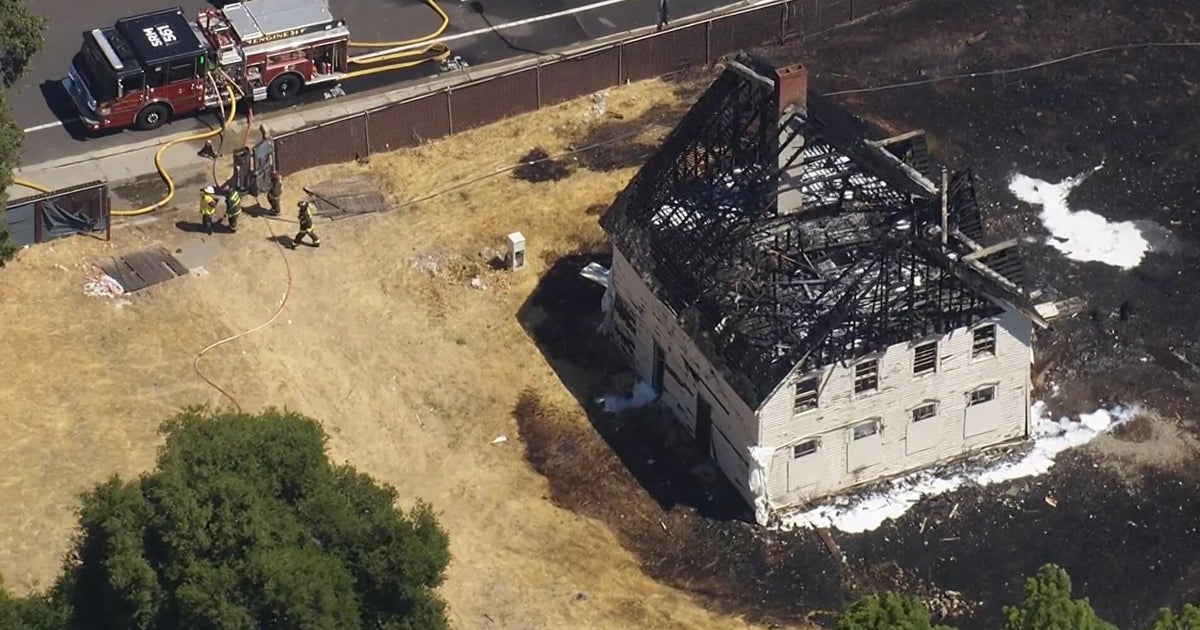High Temps, Dry Conditions Raise Specter of Drought and Fire Danger Across the Bay Area
ORINDA (KPIX) -- Record-high spring temperatures across the Bay Area on Wednesday were putting neighborhoods across the region on high alert due to growing drought concerns and worries about the upcoming wildfire season.
As a dry March all but seals what will be a disappointing water year for California, drought is launching early worries about the coming fire year.
"Our hope was, obviously, that we were going to have much more rain than we did," said Paul Lowenathal of Calfire. "With the lack of rain, the concern really does shift now towards what could potentially be another long fire season."
For Calfire officials -- and everyone in the state, really -- the dry winter means more risk and a changing schedule. The warnings, inspections and brush clearing normally seen in late May or June may come a bit sooner this year.
"There is the potential, with the way the season is rolling out, that we may be starting much earlier than we anticipated," Lowenathal explained. "Obviously, we're paying attention to it. But our community is paying attention to it. We are receiving an increased amount of questions and concerns from residents."
"People are very anxious about wildfire, for sure," agreed Melanie Light, who lives in Orinda.
Light isn't just anxious about her home. She's also worried about the risk that stretches across the East Bay hills.
"I started a fire-watch group in this neighborhood. We have about 68 or 70 homes," she said.
There 23 more similar groups representing about 15,000 households. They've been pushing for more safety work by the city, and are trying to get more neighbors engaged. Light told KPIX the end of March, the dry winter, and the recent examples of fire catastrophe should have everyone thinking about fire safety year-round.
"We have to consider that we are in permanent deficit, in terms of the water that we have available to us," Light explains. "Which means that we really need to pay attention to the decades of overgrowth that happened in neighborhoods, suburbs, and wild lands obviously."
Of course, the East Bay is not alone when it comes to residents with wildfire concerns in the region.
There are also thousands of Mill Valley homes located in a very high fire hazard zone.
Fire burning on a steep slope preheats the vegetation above it. It is one of many reasons, including a lack of rain, that elevates the danger of a wildfire.
When the explosive CZU Lightning Complex wildfires erupted in 2020, homes tucked deep in the Santa Cruz Mountains hadn't seen that magnitude of destruction in more than 100 years.
"It's a risk you have to live with," said Christina Oldenburg.
Oldenburg has lived in Mill Valley for decades.
Roads are so narrow it makes two-way traffic impossible. That coupled with dense forests, power lines running overhead, challenging topography and slopes with homes nestled in the Wildland Urban Interface make it a dangerous place to live.
"I'm just afraid if we have a really big fire it would be impossible to save all of our homes," said Oldenburg.
Like the Santa Cruz Mountains, this area hasn't seen a major wildfire in nearly a century. The last one in 1929 destroyed more than 110 homes.
But a second consecutive dry year, and the possibility of a prolonged drought like the one that persisted between 2012 and 2016, become problematic.
"Something that we saw in the last drought was a sharp increase in wildfires, and that trend has continued since then," said California Department of Water Resources Jeanine Jones.
"It's never a good thing when you live in an area with so many big trees," said Mill Valley resident Valerie Marleau.
"The level of concern for drought and wildfires is high. It really has changed our way of life," said Mill Valley resident Matt Wulfstead.
The hot weather across Northern California on Wednesday provided an example of elevated fire danger. A vegetation fire in Boulder Creek not far from where the CZU Lightning Complex burned last year consumed around three to five acres before Calfire crews were able to stop the fire's forward progress.



